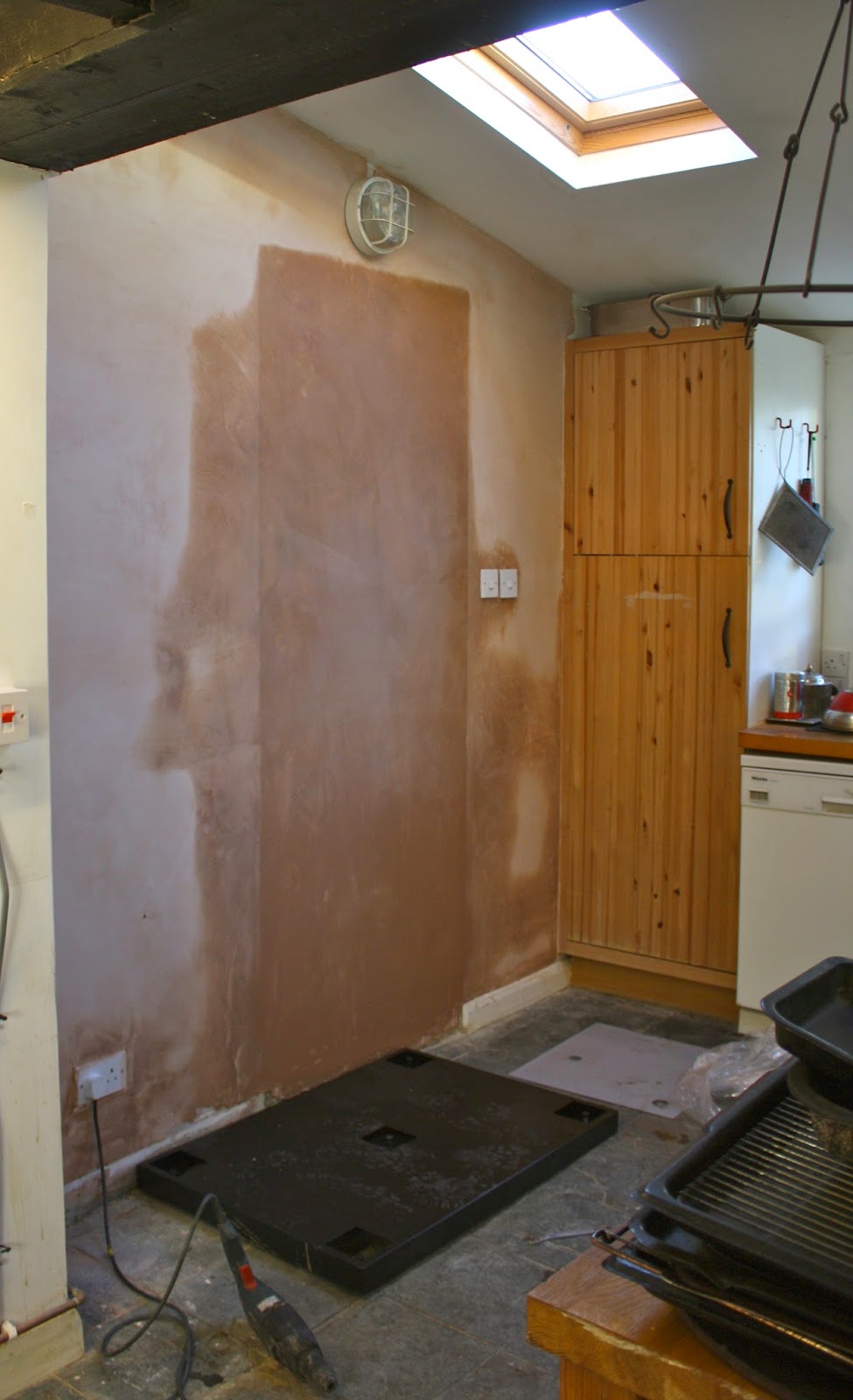 |
| Mr Fox cooking our first full English brekkie on Aggie |
Did you notice in the last post how I just dropped in, all blasé-like, that the door was in the way of the Aga's flue pipe.
Oh yes, it has taken months of whining, our old cooker blowing up (I had nothing to do with it), me getting chill blaines (I am not kidding, nor am I yet entitled to the OAP heating allowance, nor am I living in the Arctic). And Neil buying himself a ride on lawn mower, a week of plaster dust and the resulting snottyness, it has all been worth it, as my beautiful battleship grey Aga, newly named Aggie, is in.
She's already cooked several great full English breakfasts, a couple of good casseroles and is heating the kitchen like a dream.
An Aga is one of those distinctly English inventions (Yes, I know designed by a nobel prize winning Swede in 1922 and made initially in Sweden!) that really only makes sense in cold, damp English houses. First imported to the UK in 1929 they were made under licence from the 1930's. The cast iron components were originally cast at the Coalbrookdale foundry, where they are still made today by the Aga Rangemaster Group.
An Aga is a cast iron, heat storage cooker that is always on. It works on the principle that a 'relatively' small but continuously burning heat source's energy is radiated around the 2 ovens and 2 hotplates. There are now bigger Aga's with more ovens, but the classic is 2 x 2.
The Aga has no switches or dials, thermostatic controls maintain the top oven at around 220 and bottom at 120 and the two plates either boil or simmer. The boil plate does indeed boil a kettle pretty darn fast, while the simmer is more than what I would call a simmer - 2p under the saucepan seems to reduce it to more of a simmer. (Thanks Adrian for that!) Within the ovens heat comes from all surfaces simultaneously which is meant to preserve the food's moisture, flavour and goodness.
Aggie is bloody brilliant! The jury is out on her fuel efficiency and green credentials, but I love her anyway. I will not have a word said against her, she is wonderful. She is actually a reconditioned old girl, but looks and works as good as new; her insides having been sand-blasted and her outsides having been re-enamelled. I got her from The London Cooker Company who renovated, delivered and installed her. They were great, checked and re-checked the site was suitable and built her in situ. Do you want to see how they build an Aga? I thought it was just amazing to watch:
 |
| The plinth |
 |
| Once the plinth is level sides are added and the burner and bottom oven put in place |
 |
| Third side is in place and the circle of light you see is the hole for the flue. |
 |
| The front is fitted and first lot of insulation is added - a vermiculite (In old Aga's it used to be ground seashells!) |
 |
| Top oven is added |
 |
| Plates are put into place, levelled and flue properly sealed |
 |
| The rest of the body of the Aga is filled with vermiculite, more fiberglass insulation added on top. |
 |
| The black enamel top is added |
 |
| The distinctive chrome lids to the hotplates are in place and the enamel doors on the ovens |
And then just 8 hours for the old girl to get up to temperature. Oh yeah, that's why you never turn her off and as you can imagine, she's not very easy to move if you decide to redesign your kitchen. But that's fine because she isn't going anywhere, Aga's have a life-span of upwards of 50 years.

















